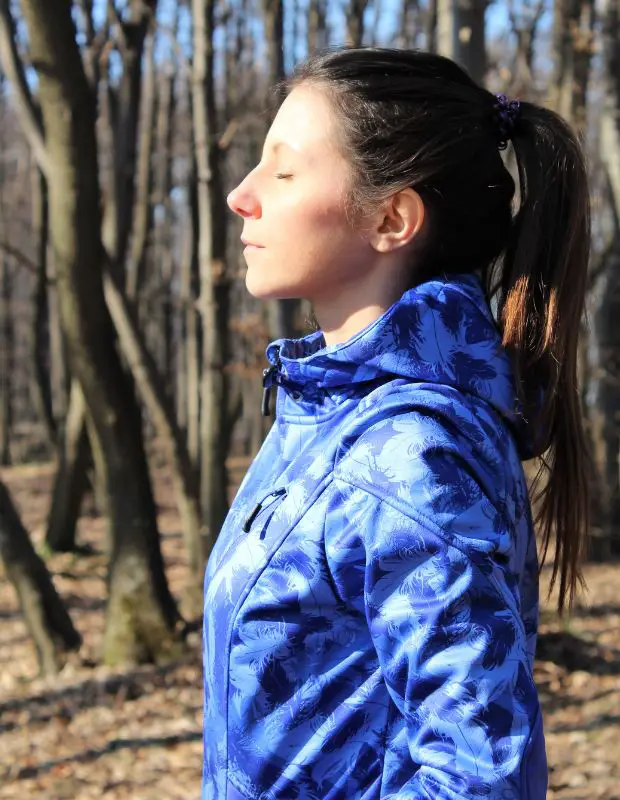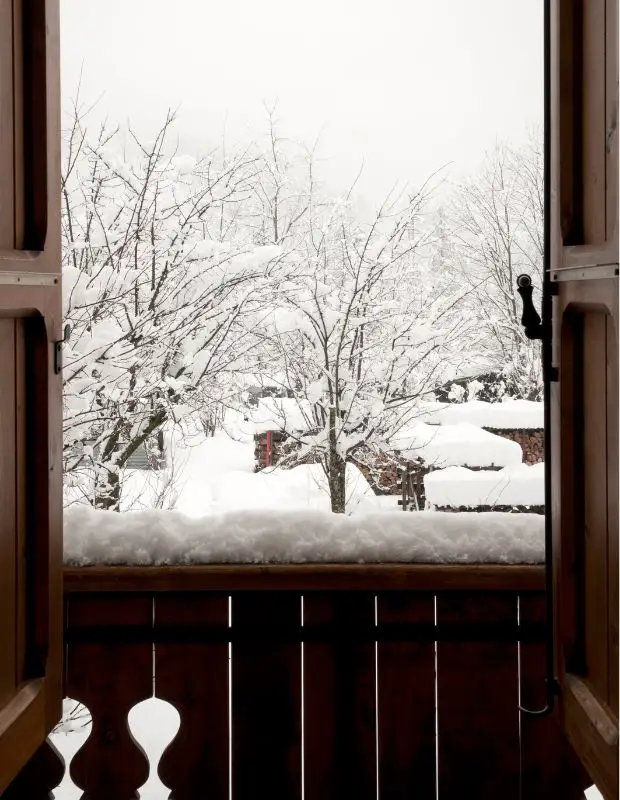
As the vibrant colors of autumn fade, a chill whispers through the air, heralding the arrival of winter.
It’s a time when the world quiets down, and the days surrender early to the encroaching night. With this retreat of sunlight, our spirits can sometimes wane, and our energy seems to mirror the shortened days. But what if the secret to thriving through the cold months lies in the very thing we find ourselves craving—light?
Here’s a full video about using light to your advantage during winter months:
The Coming of Winter: An Introduction to Our Starved Sunlight
As the leaves turn and the days shorten, our world tilts away from the sun, ushering in the winter season. Our bodies, akin to complex ecosystems thriving on light, encounter a stark drop in natural sunlight. German poet Johann Wolfgang von Goethe, with his dying wish for ‘More light!’, intuited our intrinsic need for the sun’s embrace. Embracing Goethe’s insight, let’s delve into the science of light and its profound impact on our well-being during the winter months.
The Axial Tilt: A Celestial Dance of Light and Dark
Our planet’s jaunty tilt, a souvenir from a cosmic collision eons ago, gifts us the seasons. This 23.5-degree inclination is responsible for the varying sunlight that bathes different parts of the Earth throughout the year. As the North Pole shyly turns from the sun, we enter a period of shortened days, climaxing with the Winter Solstice—the shortest day. Conversely, the Southern Hemisphere enjoys an abundance of sunlight. This tilt is more than a mere astronomical phenomenon; it shapes our daily lives and moods.
The Shadow of Winter: Seasonal Affective Disorder (SAD)
In the shadow of winter lies a less-discussed but widely felt specter of Seasonal Affective Disorder (SAD). Clinics from Cleveland to the UK’s National Health Service recognize the reach of SAD, affecting millions with its depressive grip as daylight dwindles. This disorder, along with its milder cousin, the ‘winter blues’, is a testament to the undeniable link between sunlight and our mental health.
Unpacking SAD: The Science of Sunlight and Serotonin
The culprits behind SAD are manifold, but they center around our exposure to sunlight—or the lack thereof. Sunlight’s scarcity during winter disrupts our circadian rhythms, dampens the production of mood-lifting neurotransmitters, and precipitates a vitamin D shortfall—a nutrient deficiency affecting a staggering half of the global population.

Understanding Light: Lux and Kelvins
Light, our silent ally against winter’s gloom, is quantified in Lux and Kelvins. From the bright noon sun to the dim glow of an overcast day, understanding these units is vital. It’s not just about intensity; color temperature also plays a crucial role in our psychological response to light. The cooler, blue end of the spectrum can energize us, akin to a crisp winter morning’s invigoration.
Maximizing Light Exposure: Tips from the Experts
Professor Andrew Huberman of Stanford University champions the benefits of early morning sunlight for synchronizing our internal clocks. Just a brief communion with the dawn can set our circadian rhythm on the right track, fostering a day of alertness and a night of restful sleep, even when winter tries to skew our biological schedules.
The Morning Ritual: Waking with Light
The transition from sleep to wakefulness is a delicate process for the body. A harsh alarm can trigger a stress response, releasing cortisol and adrenaline, which can lead to a state of agitation. In contrast, a wake-up lamp that simulates the gentle rise of the sun aligns with the body’s natural production of cortisol, which gradually increases in the early morning hours to help us wake up. This light-based awakening supports our hormonal balance and circadian rhythms, fostering a sense of well-being from the moment we open our eyes. For an enhanced experience, look for lamps that also include natural sounds, gradually filling the room with both light and a symphony of the outdoors.

Bringing the Sun Indoors: Light Boxes and Meditation
During winter’s late dawns, a light box can become a beacon of simulated daylight. These devices are not just rudimentary lamps; they are designed to emit light that mimics the full spectrum of daylight, which can trigger the same biological processes as the sun. Integrating a light box into a morning meditation routine can help to reset the circadian rhythm and has been shown to reduce symptoms of SAD. The practice of meditation itself promotes mindfulness and reduces stress, and when combined with light therapy, it can have a synergistic effect on mental health.
Combating the Winter Blues: A Multifaceted Approach
The battle against the winter blues is won through a strategy that encompasses various aspects of lifestyle. Nutrition also plays a critical role; foods rich in Vitamin D, omega-3 fatty acids, and tryptophan can support brain health during the darker months. Additionally, engaging in creative activities like painting or writing can help channel the mind’s focus and provide a sense of accomplishment and joy, acting as a buffer against the low moods of winter.

Staying Active and Connected
Physical activity has a well-documented effect on mood enhancement due to the release of endorphins. Even on the coldest days, a brisk walk can invigorate the senses and elevate the spirit. Likewise, maintaining social connections is crucial for mental health, providing emotional support and combating the isolation that can come with winter. Arranging regular meet-ups with friends or joining community groups can give us something to look forward to and keep us engaged with the world around us.
Practical Tips for Daily Light Engagement
- Adjust your indoor lighting to be brighter and cooler in the morning to mimic the energizing effect of daylight.
- Use reflective surfaces and decor to enhance natural light in your living and workspace.
- Take breaks during the day to step outside, even for a few minutes, to expose yourself to natural light.
- Incorporate a full spectrum of light in your environment with LEDs that simulate daylight conditions.
- If you work late, use devices that limit blue light exposure in the evening to prevent disruption of your sleep cycle.
- Engage in ‘light tourism’ by visiting brightly lit places like greenhouses or art galleries when the weather is too harsh for outdoor activities.
Conclusion: Embracing Light in the Heart of Darkness
As winter cloaks the world in shadows, let us remember that light is a powerful ally. By understanding its effects and integrating it wisely into our daily routines, we can transcend the season’s challenges. Let’s step into the light, and in doing so, find our way through winter’s night. Next up, you may want to explore a guide on overcoming anxiety as a writer.
Hey there, welcome to my blog! I'm a full-time entrepreneur building two companies, a digital marketer, and a content creator with 10+ years of experience. I started RafalReyzer.com to provide you with great tools and strategies you can use to become a proficient digital marketer and achieve freedom through online creativity. My site is a one-stop shop for digital marketers, and content enthusiasts who want to be independent, earn more money, and create beautiful things. Explore my journey here, and don't forget to get in touch if you need help with digital marketing.

